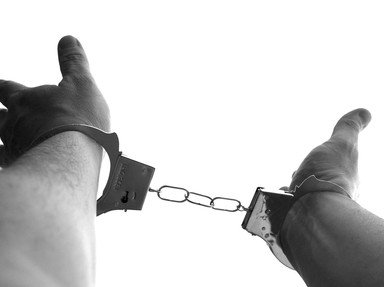Quiz Answer Key and Fun Facts
1. Let's start with some Supreme Court subversions of justice for the first three questions. Which lamentable case of the pre-Civil War era involved telling a former slave that he was in fact property, and therefore had no standing to sue for his freedom?
2. This next Supreme Court case of 1896 upheld the "separate but equal" rule for how different races could be treated. Which travesty of justice was this?
3. Which Supreme Court case ruled that Japanese-Americans could be held in internment camps in the United States during World War Two, a travesty that the government apologized for decades later?
4. In this famous 1925 trial in Tennessee, a teacher was convicted of teaching scientifically accepted material that was also in the state-sanctioned textbooks. However, a new law had popped up making that material illegal, and he was convicted in a wildly overhyped trial. Which bizarre chapter in the history of the justice system was this?
5. Which American city boasted a set of cruel witchcraft trials in 1692, where 19 people, mostly women, were hanged and one man was "pressed" to death in a frenzy about supernatural criminality?
6. This man was convicted of the murder of a 13-year-old girl in Georgia in 1913, with what many believed to have been heavily doctored evidence. The governor granted a commutation of the sentence, which stirred up hatred in the Southern mobs who lynched him to pre-empt further clemency (the man was a Northern Jew and unpopular in the area). Who was this, whose story was the basis for the musical "Parade"?
7. A French officer who was wrongfully convicted of treason in a 1894-5 trial. He was sent to Devil's Island and inspired the scathing social critique "J'accuse" by Emile Zola. Who was this unfortunate man, whose "Affair" angered France?
8. Which American woman, whose vote in 1872 led to a conviction for voting and a ruling that the 14th amendment did not in fact allow women to vote, was a standard-bearer for the women's suffrage movement nonetheless?
9. Which Renaissance-era proponent of the Copernican theory of heliocentrism ran afoul of powerful Church figures, notably Cardinal Bellarmine and ultimately the Pope, and found himself formally and legally required to renounce his views by the Inquisition?
10. This ancient Greek philosopher also ran afoul of religious and civil authority and was convicted of heresy and corrupting the youth of Athens - leading directly to his execution by drinking hemlock. Which philosopher was this?
Source: Author
merylfederman
This quiz was reviewed by FunTrivia editor
bloomsby before going online.
Any errors found in FunTrivia content are routinely corrected through our feedback system.


